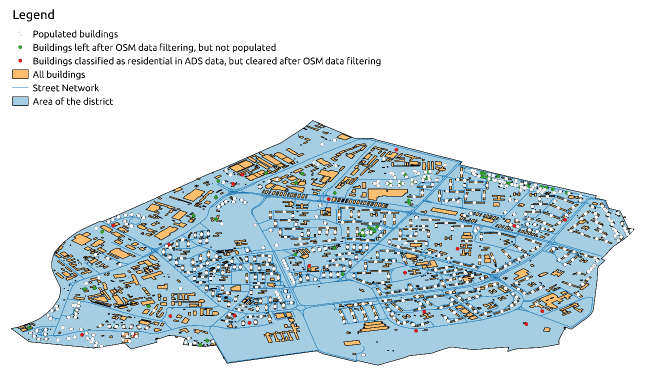| Student | Azer Ramazanli |
| Supervisor | Aleksei Tepljakov |
| Keywords | synthetic population, pathogen spread dynamics, geographic information system |
| Degree | MSc |
| Thesis language | English |
| Defense date | August 12, 2021 |
| Document link | Download Thesis Document |
Disease Spread Modeling
Abstract
As the world population figures rise and interstate mobility becomes increasingly ubiquitous, infectious disease outbreaks become more and more dangerous, having high transmission rates and causing more impact on our lives. The ongoing COVID-19 pandemic which according to Worldometers.info, has reached more than 196 million confirmed cases and caused more than 4 million deaths as of 29 July 2021, shows how vital it is to understand the spread mechanisms of the viral pathogens and to be able to detect probable reasons and sources triggering higher disease transmission rates.
This thesis work is conducted as part of the project entitled “COVSG22: Monte-Carlo analysis of the spreading rate of a virus as a function of human mobility and social distancing” run jointly by the Department of Cybernetics and the Department of Computer Systems at Tallinn University of Technology. The project aims to simulate a country-level infectious disease outbreak scenario based on the example of the Republic of Estonia during the COVID-19 pandemic. One of the principal goals of the project is to predict the number of infected cases for various spatial scales, the largest one being the country itself, based on a complex set of parameters with the help of simulation and modelling. The successfully developed model is expected to contribute to determination of the optimal prevention methods against the transmission of infectious diseases and the strategies in the control of an outbreak.
The main contribution of this thesis work is the synthetic population generator software which besides building the geospatial environment of the Republic of Estonia, also generates a synthetic population reflecting the overall characteristics of the Estonian society in itself. The biggest advantage of the software is that, it achieves the mentioned features utilizing only open-access aggregated data, without requiring the use of any personal information. Another benefit of the generator which can be noted is that, even though, the outcome of the synthetic population generator is originally intended to be used in the country-level scale-free network-based simulations of different disease spread scenarios, the capabilities of the software provide possibility to employ it also for other epidemic models like agent-based and Monte Carlo simulations, or even in a larger context, for simulations dealing with other types of spread like information spread in the future.
Project results
As a result of this work, a synthetic population generator has been built for the Estonian population based on only open data. The generator is written in Python programming language and can be used to set up an artificial population for the purposes of modeling spread as well as road network analysis etc.


